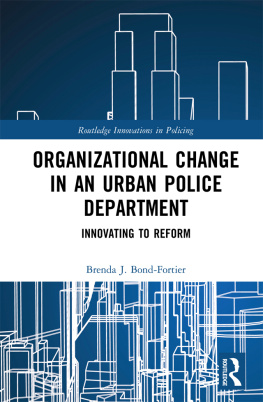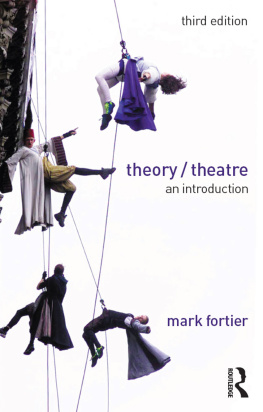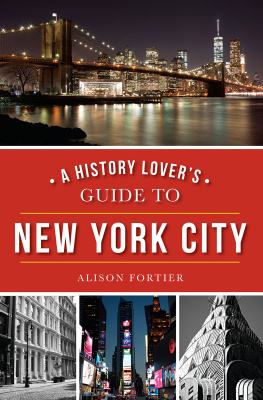Published by The History Press
Charleston, SC
www.historypress.net
Copyright 2016 by Alison Fortier
All rights reserved
All images by James Maher.
First published 2016
e-book edition 2016
ISBN 978.1.62585.689.0
Library of Congress Control Number: 2015959411
print edition ISBN 978.1.46711.903.0
Notice: The information in this book is true and complete to the best of our knowledge. It is offered without guarantee on the part of the author or The History Press. The author and The History Press disclaim all liability in connection with the use of this book.
All rights reserved. No part of this book may be reproduced or transmitted in any form whatsoever without prior written permission from the publisher except in the case of brief quotations embodied in critical articles and reviews.
PREFACE
Like many others whose stories are in this book, I came to New York from elsewhere. My own migration from the Midwest was relatively short. My parents moved to New York City when I was a teenager. Immediately, I fell in love with the city and its multitude of people and attractions. As an adult, work and family drew me to Washington, D.C. New York City became a special occasion place. This book represents my attempt to return to New York, to walk its streets, to integrate my life into its life and to revel in its every facet.
New York City, known for modernity and change, boasts nine National Monuments, Memorials and Sites, more than any other city in the United States. Only presidents and the United States Congress can designate a site as a National Monument in consideration of its extraordinary place in American history. A National Historic Landmark designation indicates that the secretary of the interior and the National Park Service regard the site as important to American heritage.
For this book to exist, I am deeply indebted to Banks Smither, my editor at Arcadia/The History Press. Dr. Thomas Keaney, Dr. Jeffrey Kelman and Ann Sauer kindly read drafts of the book, and each made very helpful comments. I would like to thank them for their support and contributions. James Maher, the photographer of all the beautiful images, has succeeded in conveying the majesty and vitality of New York City and its citizens.
The visit to sites in each chapters Your Guide to History section is organized by general topic and geographic location from Lower Manhattan to Inwood in Manhattan, followed by Brooklyn, Queens, the Bronx and Staten Island.
The New York City skyline from Central Park. Courtesy of James Maher.
CHAPTER 1
SUPERLATIVE CITY
THE BIGGEST AND BEST OF THEM ALL
New Years Eve in Times Square, Thanksgiving Day parades and Santa Claus, skyscrapers and the Statue of Libertythese are celebrations and symbols of America that bring smiles to our faces. They are a gift to us from New York City. New York redefined itself in the nineteenth and twentieth centuries. In so doing, it redefined our country.
New York was the most populous city in the United States by 1825. It quickly became the preeminent American city. New York City has owned every superlative: it was the wealthiest, the most innovative and diverse and the most splendid in the country. In the early twentieth century, the longest bridge, the tallest skyscraper, the largest public park and the most extensive subway system in the world were all in New York City. New York was the first city anywhere to be electrified and the first to have telephone service. Its concert halls, theaters and museums became the arbiters of taste and distinction in this country.
With its obvious attractions, nineteenth-century New York became a magnet to many. Those who made vast fortunes elsewhere came to New York City to make their mark. And so John D. Rockefeller, Andrew Carnegie, Henry Clay Frick, James Duke and Joseph Pulitzer left Cleveland, Pittsburgh, North Carolina and St. Louis to reside in New York and make their contributions to the city. The first two millionaires in the United States lived in New York City in 1850. By the end of that century, there were scores of millionaires hereso many that a stretch of 5th Avenue became known as Millionaires Row.
New York also attracted the poor, the outcast and the persecuted. They came in large numbers. Between 1824 and 1924, thirty-four million immigrants entered this country. Twenty million arrived at the Port of New York. The majority of those who entered each year by way of New York stayed. Little Italy, Chinatown and Kleindeutchland grew up within the city. The Irish, Germans, Italians, Russian Jews, Polish, Chinese and countless others joined in and enriched the life of New York. Many immigrants quickly established themselves here and did well. Others suffered, finding misery and poverty where they had expected opportunity.
However grand and complex, New York City did not exist as we understand it today until 1898. Through most of the nineteenth century, Manhattan, Brooklyn, Queens, the Bronx and Staten Island were five separate entities. New York City was Manhattan alone. Brooklyn was a city in its own right. In fact, it was the third-largest city in the United States after New York and Chicago.
Some with vision recognized that combining five different entities into one city would help solve the area's increasingly vexing problems of transportation, water supply and sanitation. They promoted unification. A popular referendum on creating a Greater New York passed in 1894. It took a few more years to realize what this would mean in practical terms. On January 1, 1898, Manhattan, Brooklyn, Queens, the Bronx and Staten Island became the five boroughs, or administrative units, of one New York City. By a "stroke of a pen," New York's population increased to three million, making it the second-largest city in the world after London.
The Brooklyn Bridge deserves much credit for generating public support for a Greater New York. The Brooklyn Bridge opened in 1883, linking more closely together those two great rivals, Brooklyn and Manhattan. To cross this bridge today is a routine commute between Brooklyn and Lower Manhattan, but the bridge itself is far from common. It is an engineering marvel. Although it is no longer the longest span in the world, the Brooklyn Bridge remains one of our most beautiful American bridges. And it offers unrivaled views of New York.
Through much of the nineteenth century, millions relied on ferryboats to shuttle them across the East River between Brooklyn and Manhattan. There was, however, always the dream of a bridge to facilitate travel. But the East River was wide and deep; the challenge of building a bridge across the river was daunting. Then, an engineer named John Roebling, an immigrant from Germany, conceived of a suspension bridge that would employ the latest technology, including steel cable wiring and enormous sunken supports, called caissons.
Work began on the Brooklyn Bridge in 1869; it took $16 million and fourteen years to complete. It also took the lives of twenty workers through accidents, including the life of John Roebling himself. Roebling's son, Washington, took over supervision of the construction of the bridge but later suffered from what was called "caisson disease." Today, we call this "the bends." It was actually during construction of the Brooklyn Bridge, when workers were submerged deep under water to work on the enormous supports, that this terrible and painful killer affliction became understood. Washington Roebling's wife, Emily, assisted him in finishing the work on the bridge.













